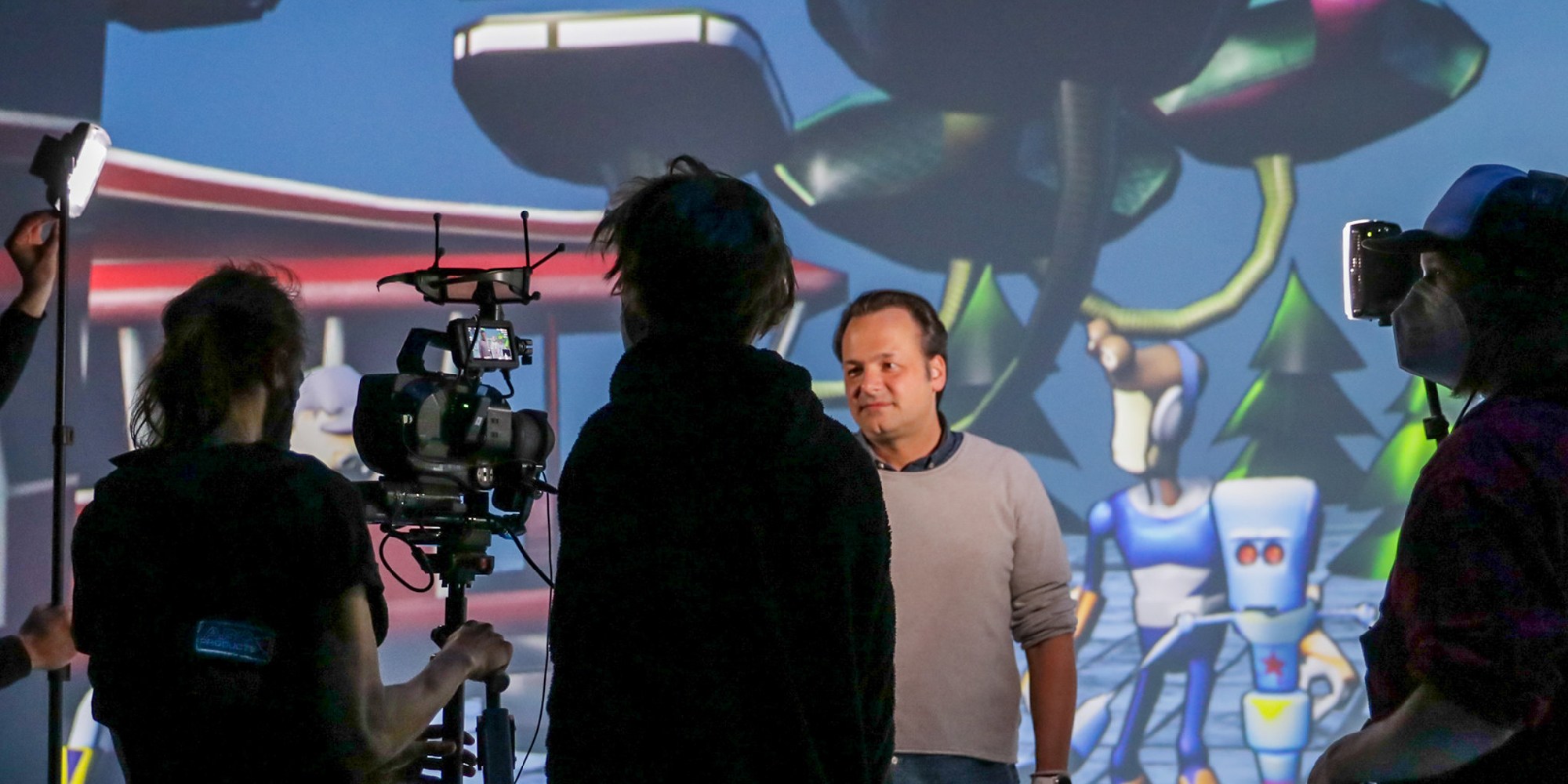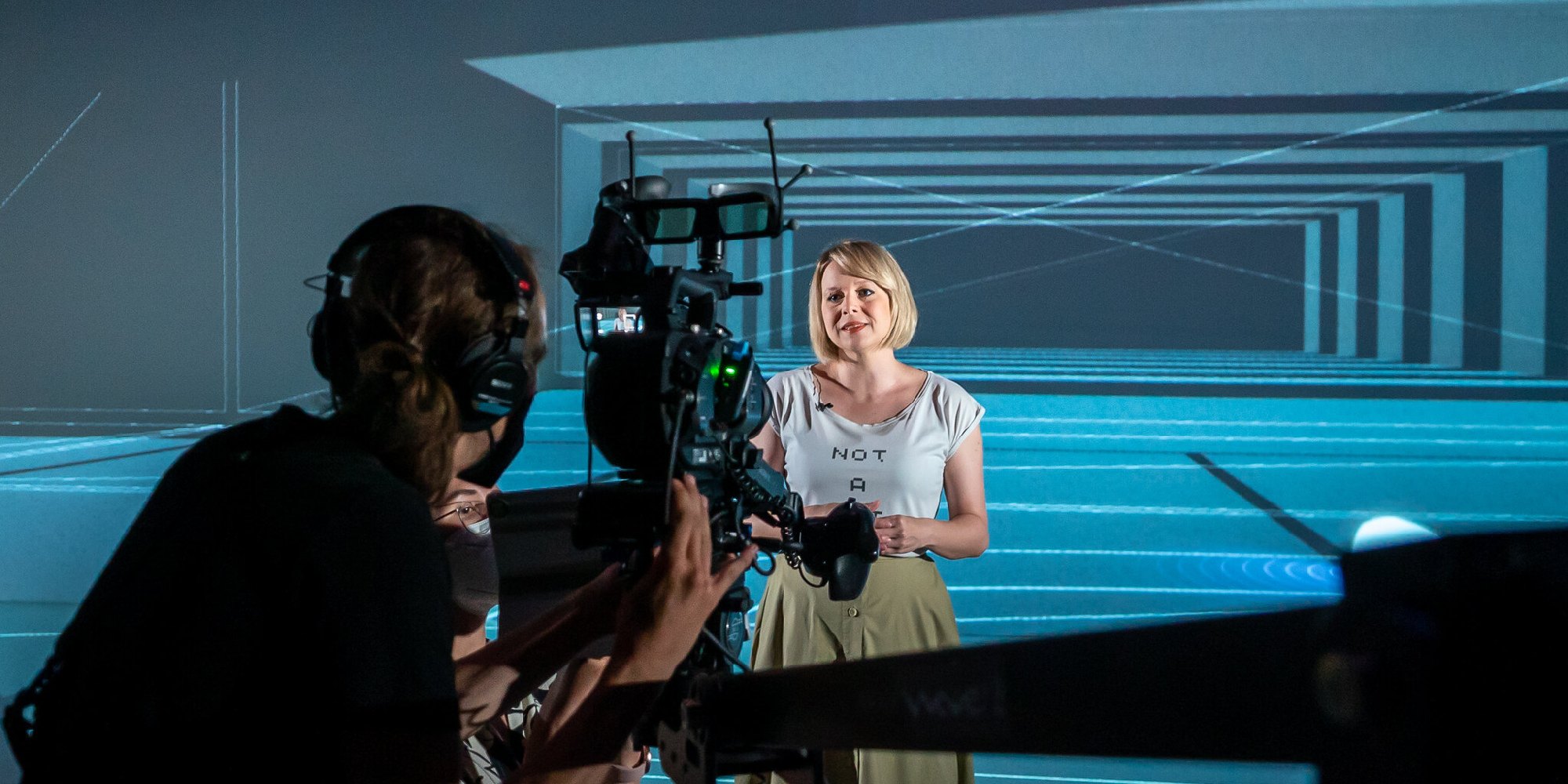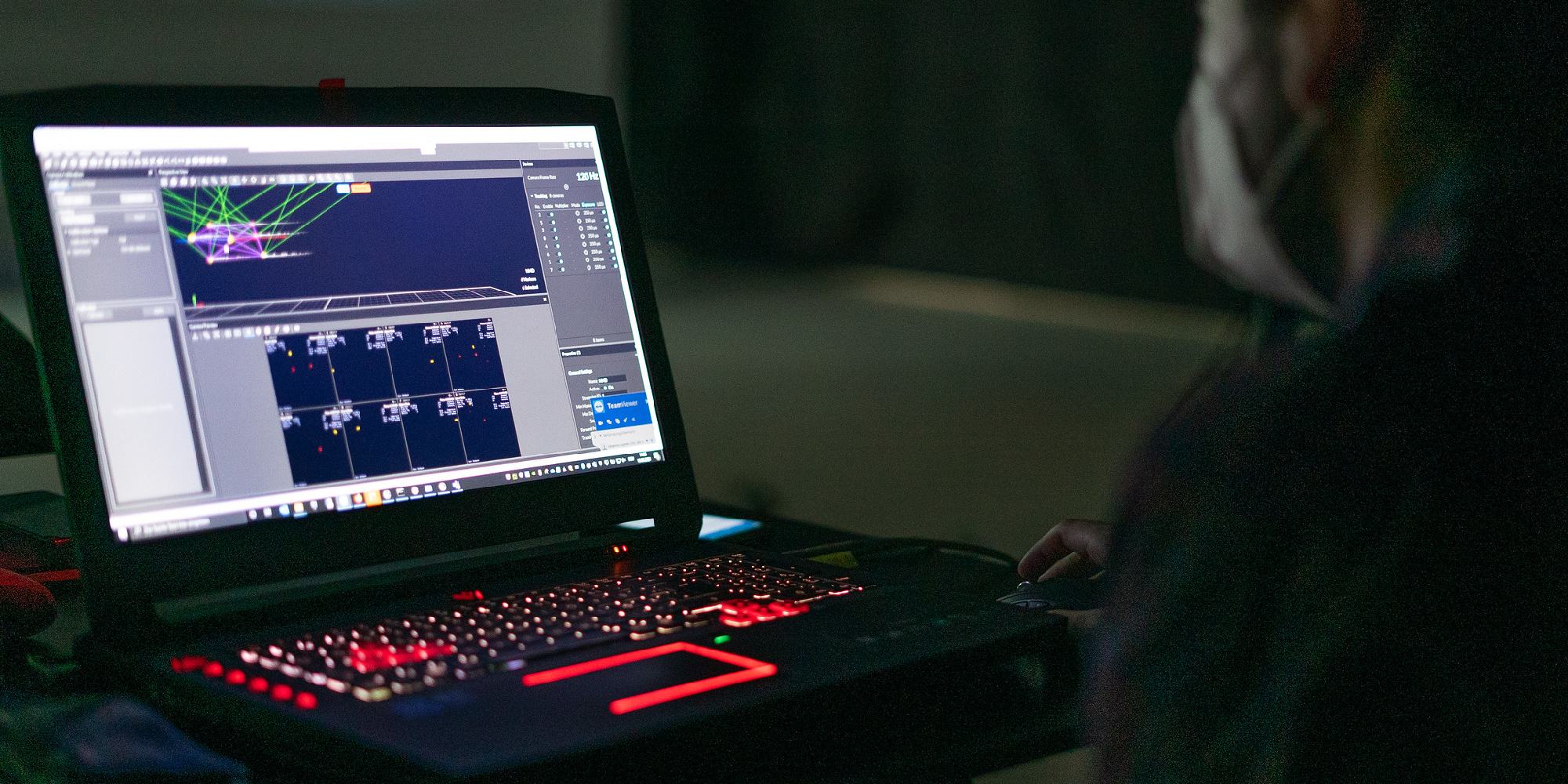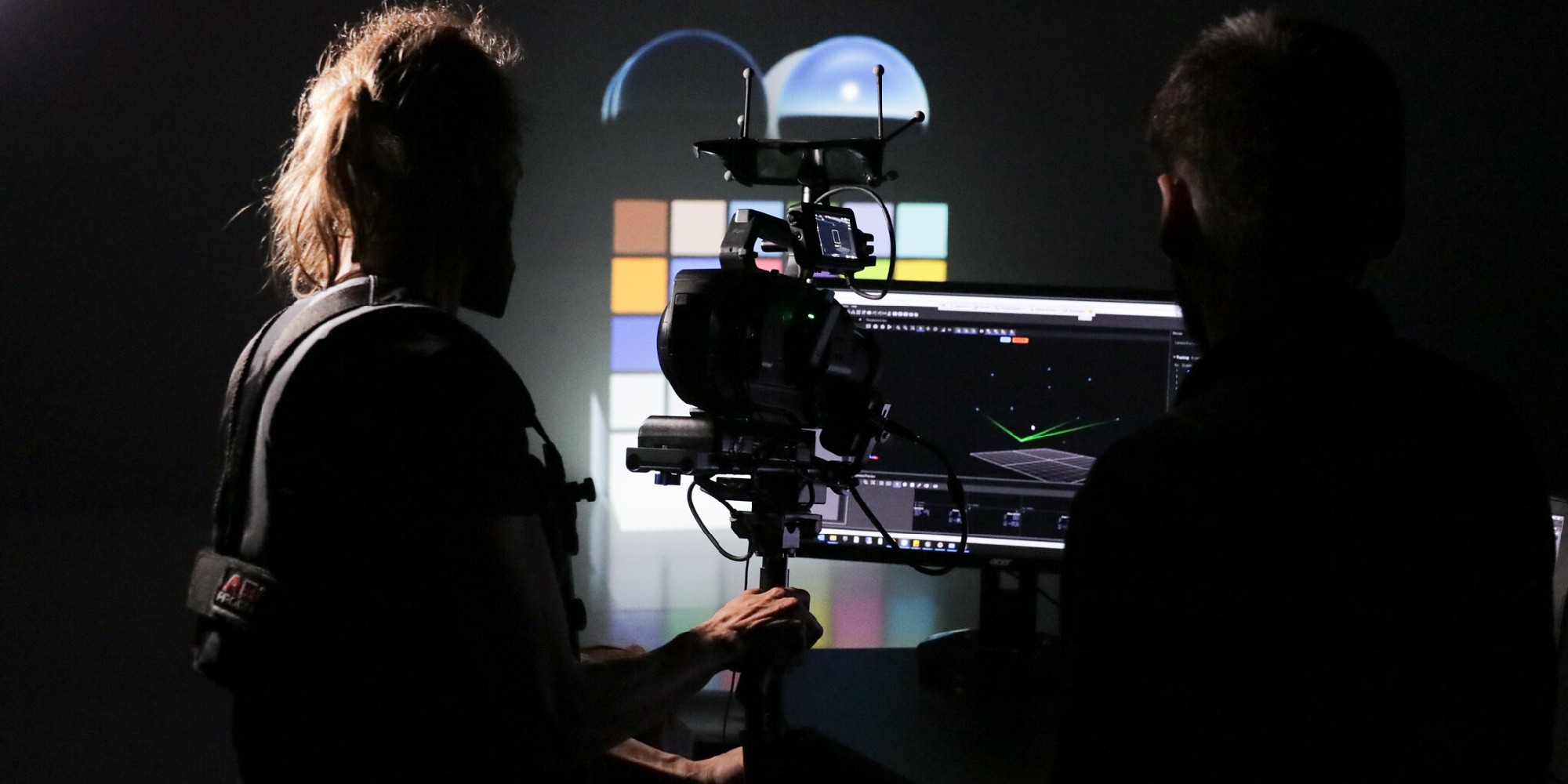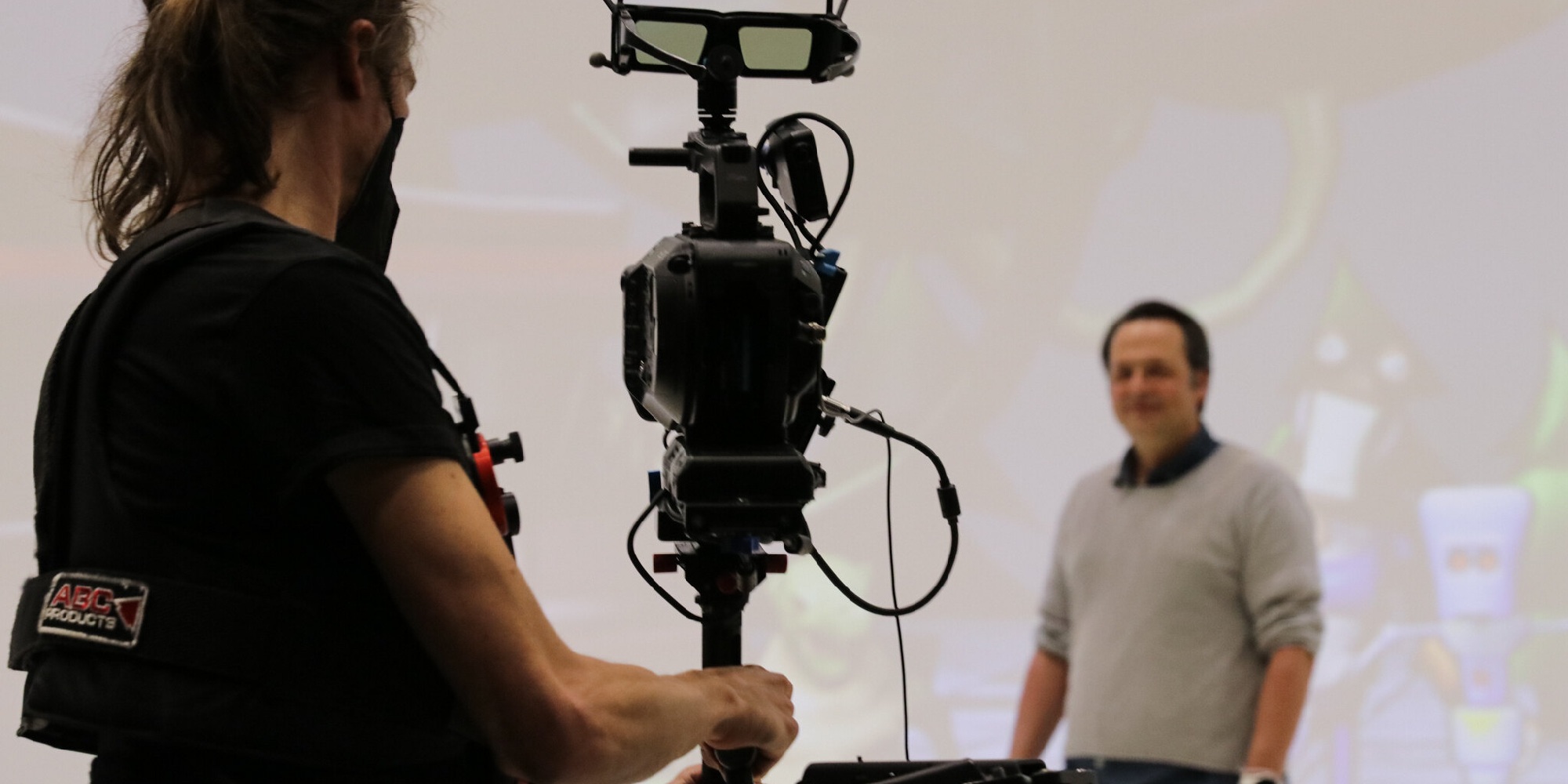Ars Electronica Futurelab’s video production system Deep Virtual is able to merge virtual into physical reality in real time and to transmit this hybrid reality instantly. With its development, the Lab has set a milestone in the history of Deep Space 8K : The idea for live hybrid video production takes the broadcasting of virtual illusions another decisive step forward.
How Deep Virtual works
Deep Virtual is a completely new system for video production that aligns the projection’s perspective in real time with the camera’s point of view, using state-of-the-art position tracking. It then allows situating the protagonists in an immersive environment where they can interact with virtually placed content. This merges the virtual world seamlessly with real people and objects.
Deep Virtual uses the latest version of the Unreal Engine, a real-time 3D creation tool for photoreal visuals and immersive experiences. Enabled by the virtual production pipeline, 2D videos using Deep Virtual convey a completely new sense of spatial depth without the need for 3D glasses.
Behind the scenes of Deep Virtual
Originally, virtual production systems come from Hollywood film studios and are used to enhance TV or film productions with additional layers of information or visual content. Virtual and real worlds are usually combined there in post-production. Deep Virtual allows this merger to happen in real-time.
In Deep Space 8K, VR research lab and 3D projection space at Ars Electronica, a laser tracking system consisting of eight cameras captures every camera movement for this purpose. The resulting images are combined with the projection in a real-time sandbox, matching perspectives: This independent testing environment lets you run programs and files without affecting surrounding applications or operating systems. This setup creates an amazing impression of spatial depth comparable to the perception of stereoscopic images. Deep Virtual was conceived to enable viewers to immerse themselves into the virtual worlds of Ars Electronica via hybrid live presentations: Both, on-site in Deep Space 8K and online via stream or telepresence robot, the audience can equally participate.
While producing eight episodes of the Anniversary Series, which the Ars Electronica Futurelab broadcast to celebrate its 25th anniversary in 2021, Deep Virtual was tested and developed step by step. After a major upgrade of Deep Space 8K, researchers are now focusing on developing different participatory formats for hybrid audiences. Conceived to produce hybrid media formats, Deep Virtual allows viewers a joint experience within a new dimension of virtual worlds, and thus represents a step into the future of Deep Space 8K. For the lab members, the transformation of the static virtual environment into a more interactive and reactive backdrop serves as an inexhaustible source of inspiration.
Credits
Production: Johannes Pöll, Kerstin Blätterbinder, Johannes Lugstein, Roland Haring
Recording: Stephan Feichter, Georgios Tsampounaris, Denise Hirtenfelder, Reinhard Zach, Raphael Schaumburg-Lippe, Patrick Berger
